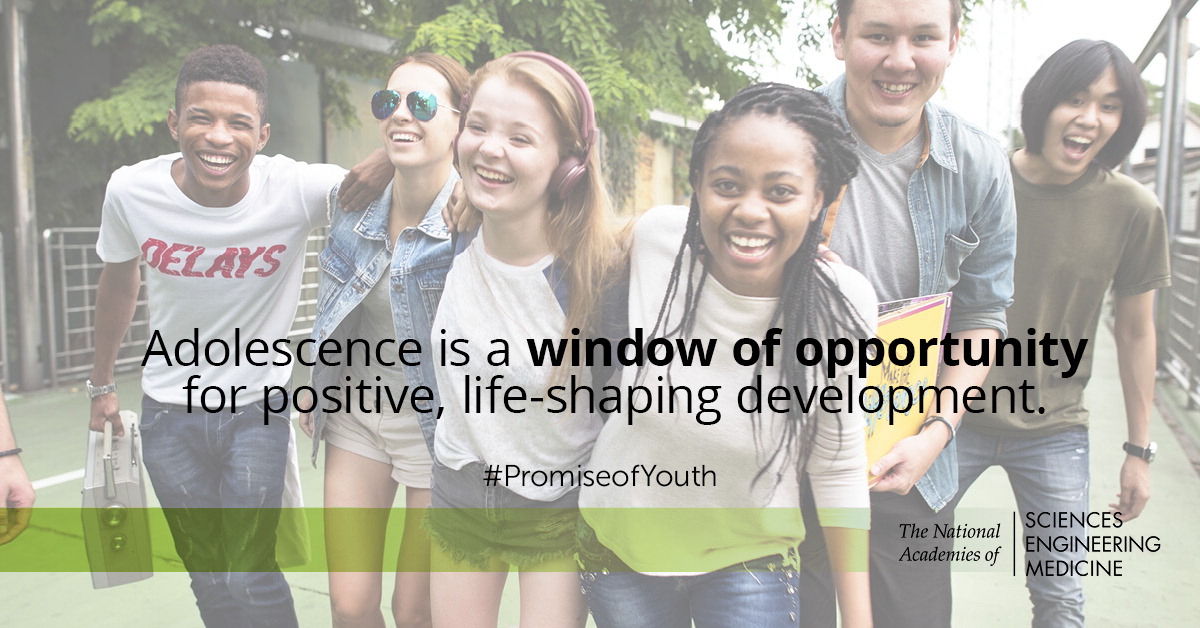At the Conrad N. Hilton Foundation, we recognize the incredible value of investing in youth. We were proud to support the newly launched report from National Academy of Medicine entitled “The Promise of Adolescence: Realizing Opportunity for All Youth,” which identifies opportunities for our education, health, child welfare and justice sectors in the United States to better support young people.
Adolescence, which runs from age 10 to mid-20s, is an exciting time of opportunity. This new report sheds light on the science of adolescent development and ways that society can support the creativity of the adolescent brain, while applying this knowledge to supportive systems that increase resources and reduce risk.
One key finding is that the heightened sensitivity to environmental influences that many adolescents possess concurrently means they are highly resilient. Investments in programs that capitalize on brain plasticity during adolescence, or the ability for brains to adapt in response to experiences, can promote positive change in young people who may have experienced trauma or other past adversities, who are often most at risk.
Our work focuses on preventing youth substance use through access to early intervention. The screening, brief intervention and referral to treatment (SBIRT) model relies on brain plasticity of adolescents to develop new coping strategies and patterns of behavior. As noted in the report, adolescent resiliency makes these interventions more effective. Through funding SBIRT, we can reduce substance use and address other risky behaviors early, before serious social and health issues develop.

Reframing how we talk about adolescence is also vital to better supporting this population. This time is often perceived as a challenging, risky period for young people. However, adolescence forms a critical bridge between childhood and adulthood, and holds incredible opportunity for positive development.
It is important to recognize that millions of adolescents do not have equal opportunity to succeed, whether due to lack of resources and support in their community, or the result of discrimination. Much of our work is built on the great potential that these young people hold. We must work together to close the opportunity gap and support all individuals through adolescence.